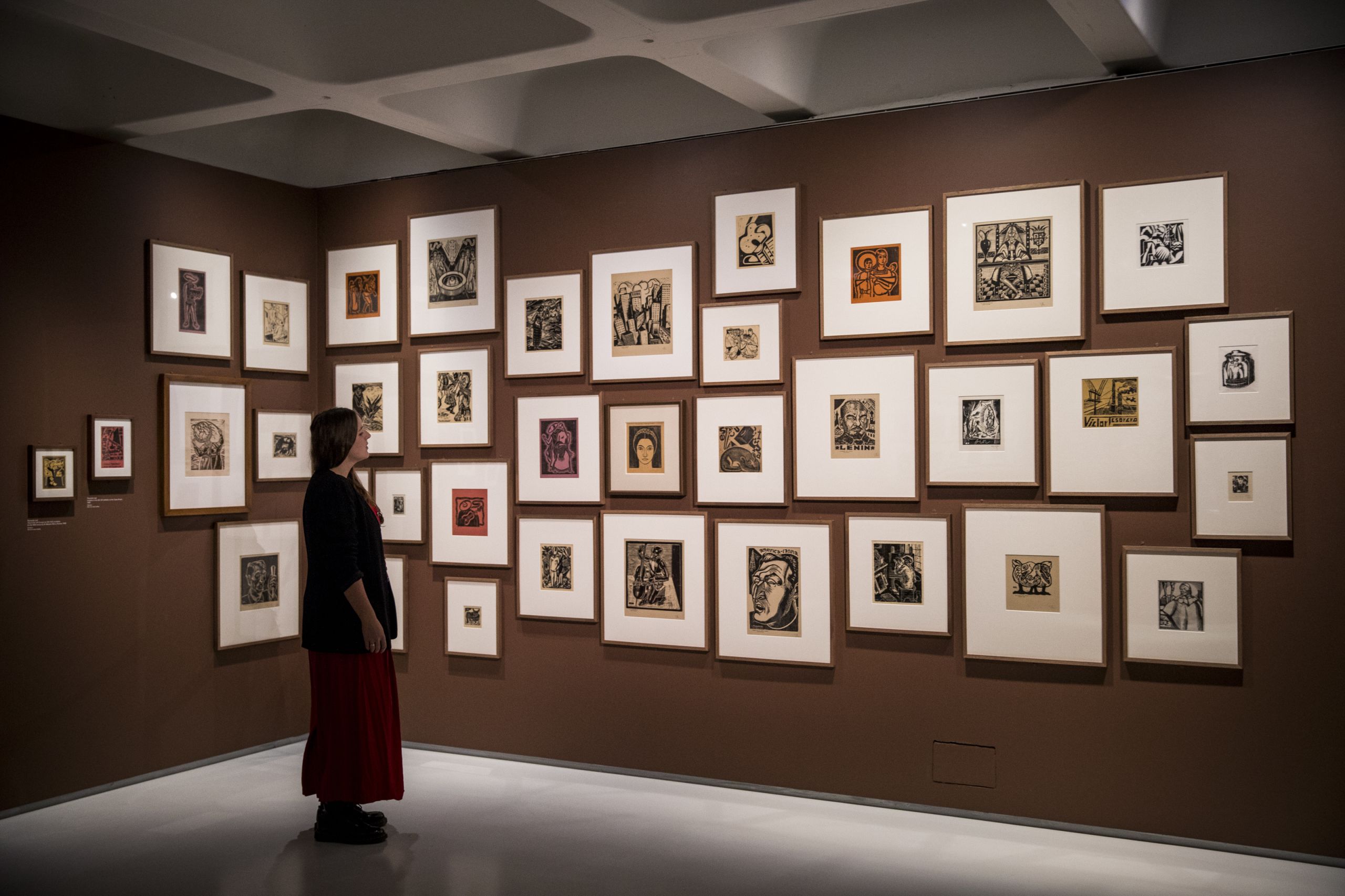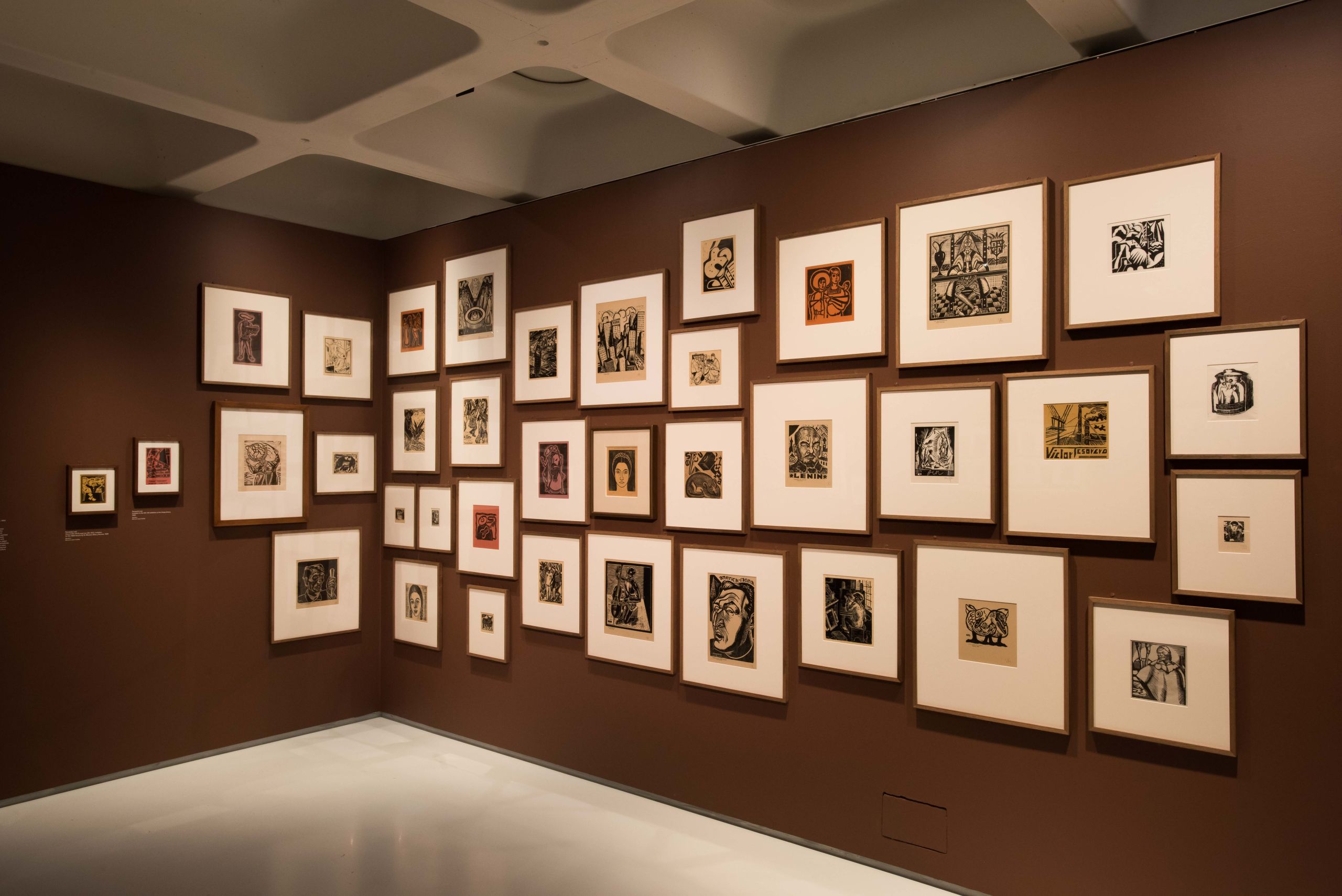Art for all:
¡30–30! in Mexico City
Embodying the revolutionary spirit of the 1920s, 'Into the Night' takes a closer look at ¡30–30!, a group who used their socialist ideals to promote affordable and accessible art.

In 1928, in a fervid period of post-revolutionary politics and rapid industrial development, radical artists in Mexico City formed a new group devoted to leftist politics and the overturn of artistic conventions. Growing out of the earlier ‘Estridentismo’ (Stridentist) movement, the ¡30-30! group shared many of its protagonists – including Ramón Alva de la Canal and Fermin Revueltas – and was supported by key writers such as Manuel Maples Arce and German List Arzubide. Sparked by the assassination in July 1928 of the President Alvaro Obregon, and reflecting its revolutionary politics, the group named itself ¡30–30! – after a popular rifle cartridge.
The so-called ‘Treinta-treintistas’ were active on numerous fronts, publishing a journal and plastering manifestos outside the National Academy of Fine Arts, whose conservative aesthetics and teachings they abhorred. They acknowledged their roots in the Estridentismo movement, and sought to create a cooperative ‘!30–30! Club de los Artistas y Escritores de México’ (30–30 Club of Mexican Artists and Writers) which might provide a hub for exhibition, performance, debate and socialising, much as the Café de Nadie had for the Stridentists. This goal was never realised, but the group found other imaginative ways of taking art beyond the stuffy academy and bringing it to the attention of the masses.

Viva el ¡30–30! (Long Live ¡30–30!), invitation to the 1929 lecture by Dr Mariano. Silva y Aceves, 1929 Woodcut 14.5 × 12 cm Mercurio López Casillas
Viva el ¡30–30! (Long Live ¡30–30!), invitation to the 1929 lecture by Dr Mariano. Silva y Aceves, 1929 Woodcut 14.5 × 12 cm Mercurio López Casillas
In November 1928, an exhibition staged in the 16th-century former monastery La Merced caused a sensation when it was opened by a clown mounted on an elephant. Such references to the circus – with its subversive associations of mass entertainment – were echoed in ¡30–30!’s most daring experiment – the Carpa Amaro in January 1929. By staging a major exhibition in a carpa (a large travelling tent used for circus, vaudeville and other low-cost popular amusements), the group fulfilled their socialist agenda of bringing art to non-traditional audiences. Artist and organiser Gabriel Fernández Ledesma explained the ideas behind staging the show in an itinerant cabaret:
‘We - a bit too bourgeois in the past - have understood the need to move closer, once again, to el pueblo (the people). It is certain that art exhibitions tend to occur in luxurious salons and great buildings in the center of the city; but, also, it is preferable for the Treintatreintistas to exhibit their work in locations where the proletariat class, especially, will attend. In this way, then, we manage to get closer to Mexican workers.’
The exhibition bore a sign, ‘Enter for free’. Inside, hundreds of unframed woodcut prints were densely pinned to the walls of the tent under brightly-coloured paper garlands, accompanied by popular music.
The choice of medium was significant. Printmaking was embraced during the post-revolutionary period as a democratic art form. A cheap way of making hundreds of near-identical images, it allowed artists to disseminate their work across the social spectrum. Printmaking facilities and classes had become prevalent in Mexico City from around 1922, introduced at several of the open-air painting schools as well as at the Escuela Libre de Escultura y Talla Directa and at the Centros Populares de Pintura in Mexico City.
The subjects of the works on display were wildly varied, ranging from staunchly political portraits to scenes of everyday life to religious tableaux. A series of prints by Fernando Leal depicts indigenous people in pastoral settings as well as the performance of a ritualistic ‘dance of the crescent moon’. Gabriel Fernández Ledesma was represented by an eclectic group of works: portraits of revolutionary leaders, including Lenin, a rural scene of a pig and her suckling piglets, a vision of skyscrapers populating the bustling metropolis of New York, and a musician playing the cello. Abstract compositions by Fermín Revueltas feature alongside Isabel Villaseñor’s bold self-portrait (one of the few female artists included in the show). Justino Fernández printed his woodcuts (including a dancing couple and a guitar player strumming traditional corrido folk songs) on vividly coloured paper, further enlivening their already spirited energy.
There was apparently something for everyone; a contemporary newspaper report remarked:
‘The purpose that the !30–30! artists laid out for themselves has been achieved: lower-class people approach the tent, look inside, doubting whether or not to enter, and then go in.’
Against the backdrop of live music in the exhibition’s tent setting, the images ‘seemed to become animated; they appeared to move and to take part in the intensely rhythmic spectacle’.
Into the Night curator, Florence Ostende explains:
‘Here is a landscape of what art was in Mexico at the time. You can hear the music, see the modernist skyscrapers of New York, the modernist construction but also the corn seller, the dance of the crescent moon and scenes of folklore, religion and ritual are all part of this landscape’.
Into the Night: Cabarets and Clubs in Modern Art
4 Oct 2019–19 Jan 2020
A journey into the world’s most iconic cabarets, cafés and clubs in modern art through the lens of pioneering artists. This landmark exhibition explores the history of cabarets, cafés and clubs in modern art across the world, from London to New York, Paris, Mexico City, Berlin, Vienna, and Ibadan. Discover works of art, many rarely seen in the UK, as well as life-size recreations of avant-garde spaces.
Watch the Into the Night exhibition trailer:
Text edited from an extract from 'El Cafe: Revolution and Renewal in 1920s Mexico' by Lynda Klinch from the Into the Night exhibition catalogue.
Into the Night: Cabarets & Clubs in Modern Art catalogue is available to purchase in the Barbican Art Gallery shop and online.
Woodcut images kindly provided by Colección Andrés Blaisten, Fondo Francisco Díaz de León, Mexico

